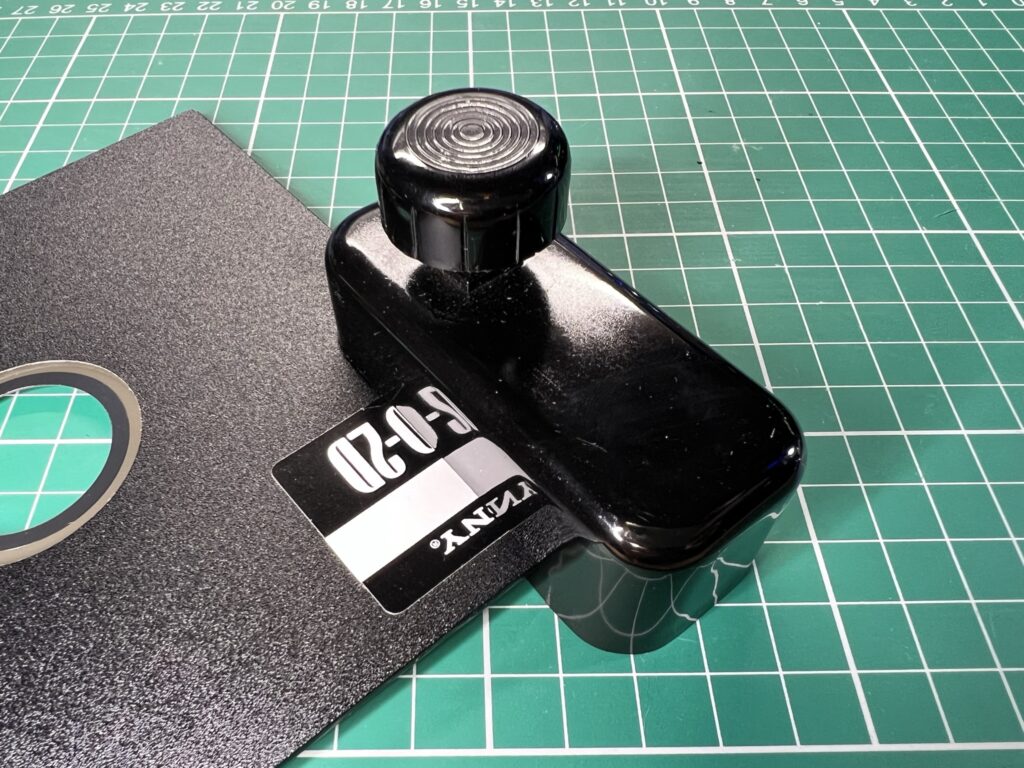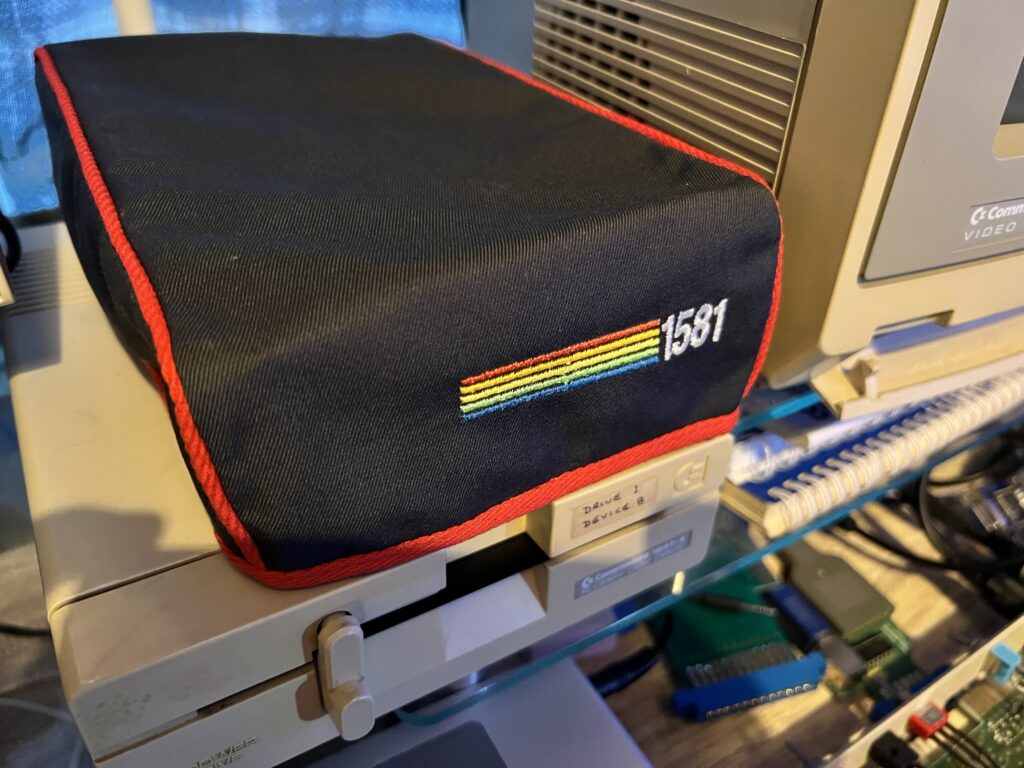The 1581 was the last disk drive Commodore produced for their 8-bit range of machines way back in 1987. It should look instantly familiar to Amiga users as it looks very similar to the A1010 drive and uses the same double-sided, double-density (DSDD) disks to provide 800K of storage. This was 80K more than PC’s could manage (720K) with the same disks at the time, but 80K less than the Amiga (880K).
In terms of program storage this equated to a whopping 3160 blocks free on a single formatted disk. This represented a huge jump from the 170K of storage (664 blocks) available on a standard 5.25” 1541 floppy and even the 340k (1328 blocks) achievable with a 1571. The 1571 was able to read/write both sides of a disk simultaneously without it’s owner having to resort to the use of a Disk Notcher and flipping the disk like a record as we swapped from Side A to Side B!

Who remembers using one of these back in the 80’s?
Despite its impressive specifications the 1581 didn’t sell well at all, for a couple of reasons. Firstly because it arrived late in the life of the C64, so late in fact that the Amiga 1000 had already been around for two years and the A500 had just launched. It also didn’t help that it was more expensive than both the ubiquitous 1541 and also the 1571 drives. Consequently there’s not many of them floating around today and decent working examples are hard to find.
Fast forward to today and there are many modern alternatives to using original Commodore hardware. For instance I already have an SD2IEC reader, a Pi1541, a Turbo Chameleon Mk2 and a 1541 Ultimate-II+, not to mention an Easy Flash 3 cartridge. All these devices offer a quick and easy way to access digital disk images on my 8-bit machines. Yet despite all logic I’ve been hankering after a 1581 for years now. Presumably like quite a few others judging by the price they can go for on eBay.
Well anyway, the point of all this is that a short while ago I finally succumbed to that desire and picked up the stunning little beauty that you can see below. In my defence I was feeling pretty miserable at the time as I was convalescing after surgery and this was a much needed bit of retail therapy!
It’s in superb, practically mint condition and came complete with the original Commodore power supply and comprehensive User’s Guide. It’s working perfectly too and shows no sign of the dreaded yellowing that my 1541-II’s have suffered.
It’s not just going to be sat on a shelf like a trophy gathering dust though, as I fully intend to put it to good use. In that regard I plan to fit it with a JiffyDOS ROM in the near future to give it a significant speed boost. I also want to incorporate it into my GEOS eco-system as it should really help improve my overall experience there by enabling me to combine multiple disks onto just one. Expect posts about both of those projects in the coming months.

1581 Dust Cover
Having said that, for those occasions when it isn’t being used I picked up this rather natty embroidered dust cover for it off eBay to protect it from dust and sunlight. The seller does a whole range of covers for Commodore machines and I have to confess I’m tempted to kit everything out in matching covers!



The internet is so powerful.
I just bought one and your article drops in my feed!
Great article
I have a few drives with my 128, but I feel like I want to put this old machine to work.. at the same time, I’m worried about this old hardware failing, then dying… what do you do?
Get it recapped, put heatsinks on any chips that get particularly warm/hot (VIC and SID’s being main culprits here) and get a safe, modern PSU for it. By doing all those things you’ve done pretty much all you can to preserve its working life. Then just use it and enjoy it! If something breaks it can be fixed – there’s still plenty of spare parts around and the community have come up with all sorts of modern replacements for the vast majority of the chips so there’s no reason not to.
yup, you’re right.. I’d have to ship it off somewhere, as I don’t live in a place where anyone would have skills to recap. Thanks for the motivation..! Cheers
You could always do it yourself, it’s not that difficult if you’ve used a soldering iron already as all the caps are ‘through hole’ and big enough to handle easily. You can buy little kits that have all the caps you need and there’s plenty of YouTube vids to assist.
I would never attempt it on the newer machines like the Amiga 600/1200 etc as they have surface mounted stuff but the old Commodores are much simpler to work on.
Whatever you decide, just enjoy using it – life is too short to worry about ‘what ifs’.
I got my 1581 on a computer dump market, 30 years ago. It was a lucky shot, there were a lot of commodore parts on sale. So I got two 1581 PCB’s, a 1581 case without the top lid, Amiga cases with drives in them and a 1764 REU.
Ultimately I could assemble everything into two working 1581 drives: one inside a Amiga drive case and the second one in the original 1581 case (without the top lid).
The assembled “Amiga” 1581 drive and REU 1764 was sold to a friend in college. I kept the original 1581 drive. I already had a 1750 REU which I had modified with another megabyte of RAM (using PC memory sticks). Both units have served me well, even several years after school.
I tried to find the missing top lid of the 1581 case, but never found it here. Do you know any places that still have original 1581 case parts left? Or will a 3D printed version fit as well?
Hi,
Afraid I don’t know of anywhere stocking parts, no. Rarely see them come up for sale these days let alone spares for them and when they do they cost an arm and a leg! I have no doubt a 3D printed version could be designed and fabricated as a replacement though. 👍🏻